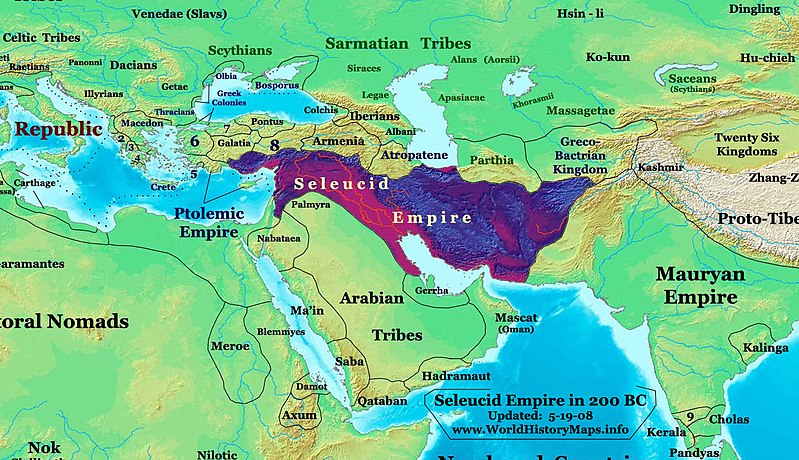Historically.
The Arche Seleukeia has been going downhill for decades by 247 BCE. It had been just 6 years since the end of the the second syrian war; it was a small temporary victory for the king Antiochos. but then, starting with the Pergamean revolt of the 260's BCE; the seleucid satrapies and allies began to proclaim themselves his enemies. Following by the independence of the satrapies of Baktria and Parthia. The loss of comunication with the easternmost regions of the empire, and the soon to come instability of internal affairs were going to be precarious to the rule of the seleucid kings.
Seleukos had returned to his former wife, Laodice. Leaving Berenice alone. That preocupied her, as she liked her son to be the heir. Ptolemy was also concerned about her and her son. But things were soon to become much worse. And the empire was eager to fight many other suicidal wars.
Government.
The Seleucid government was not very different with the Achaemenid Empire. Taxes were collected by local Satraps and merchants. The central authority, however, was at the hands of the Emperor (who named himself King; Basileos) himself. He was the highest Strategos of the army with the assistance of the nobles, princes and generals. The role of the Emperor was exactly the same as his Achaemenid predecessors.
The great and only difference was that the most important positions (Satraps, counselors and generals) were usually given to Macedonians or greeks.
Many Greeks, mostly retired soldiers were creating new settlements throughout the land (the Klerouchoi). The Greek language and religion were the pillars of the Kingdom. So they had a big hellenization of the empire but some important roles from the former Achaemenid Empire remained (mostly because of Alexander's imposition and maintaining of those same roles).
State of Diplomacy.
Seleucids and Ptolemies were in constant turmoil for almost three centuries by many syrian wars (already two at 247 BCE.). But, in 247 BCE. Ptolemaios Philadelphos was at peace and expecting his half-grandson to occupy the throne of the seleucid empire. But things will not go as planned for him.
The war between Seleukos and Chandragupta was not very well documented. The only thing known is that Chandragupta won, and they forged a peace treaty. Seleukos ceded the lands "east of the Hindus" and many satrapies were given to Chandragupta. In return he was given war elephants. By 247 BCE. The buddhist religion and many other customs from the indians were being spread by emissaries and they had prosper trade. Most of the elephants of Antiochos came from the indians.
Parthia (satrapy) and Baktria declared their independence from the Seleukid king are at war with the empire. Baktria and Parthia have declared an alliance and are helping each other to fight against the seleucids. The satrapy will be conquered soon by the king Arashk (Arsaces) and will keep warring against the seleucids.
Family.
Antiochos Theos - Faction leader
Berenice
Seleukos Ptolemaios (son of berenice) - 4 years old
Laodice
Antiochos Hierax
Seleukos Kallinikos - Faction heir
Map

Aproximate extent of the seleucid empire in 200 BCE. (We couldn't find any of near 250. And we were lazy enough not to make it until we start with the map.














 Reply With Quote
Reply With Quote
Bookmarks